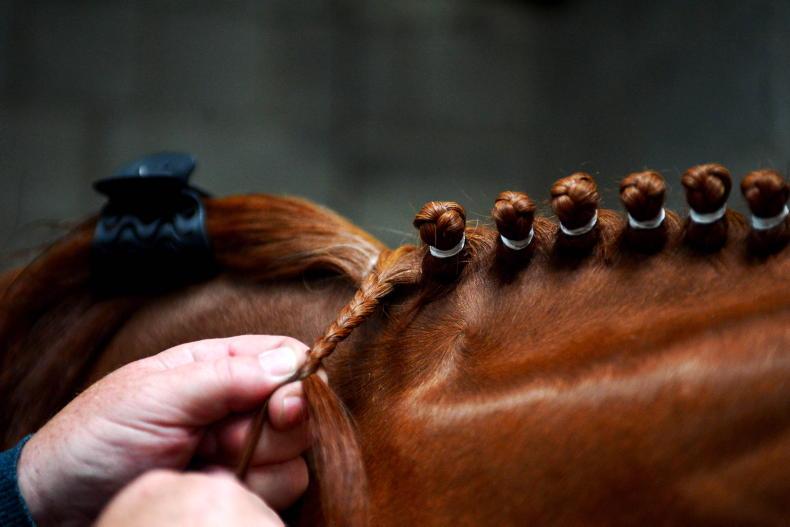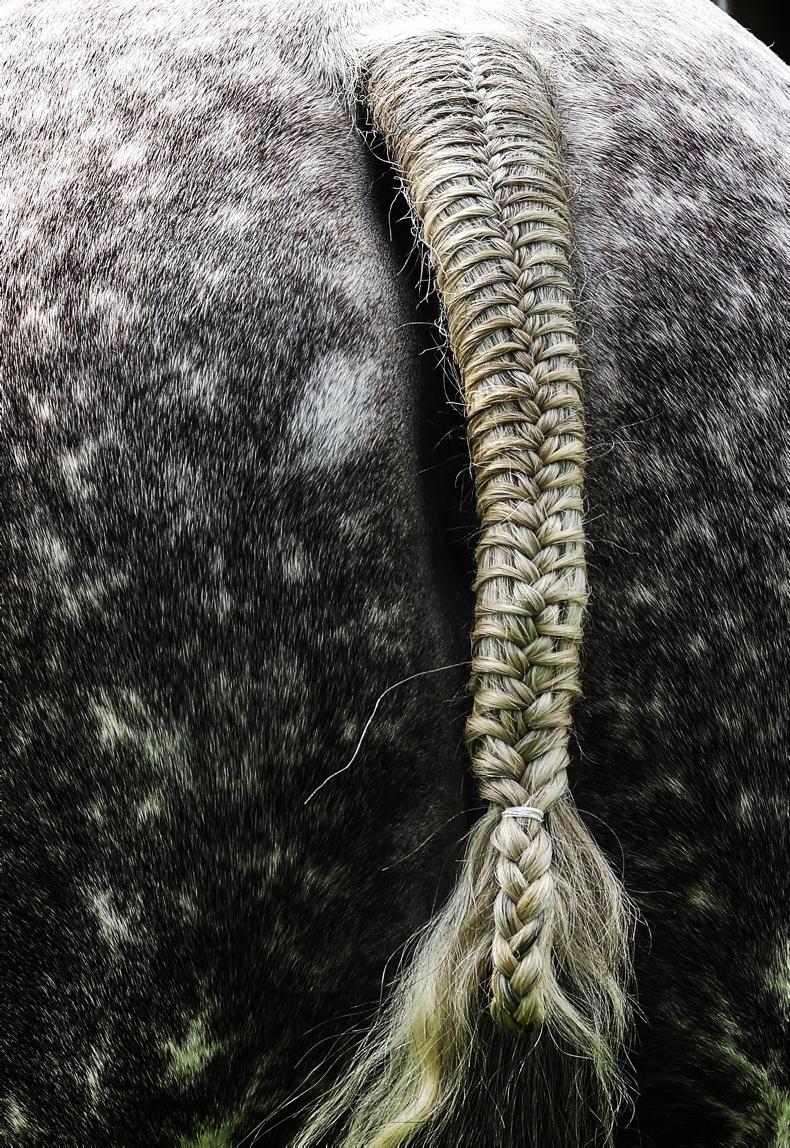AT the Dublin Horse Show, immaculate turnout is part of the tradition. From gleaming coats to perfect plaits, competitors go to great lengths to make a polished impression. But what’s really required – and what’s fair on the horse?
Most top producers I talk to agree that good grooming starts weeks, not hours, before the event. Good grooming isn’t about last-minute polish, it’s about skin care, condition, nutrition and calm handling every day.
Expectations are high. Most horses are bathed, clipped, plaited, quarter-marked, and often touched up with chalk or coat gloss. Native breeds may be left natural, but their coats, manes, and tails must still be clean, tidy, and well presented.
Growing awareness
There’s growing awareness of the horse’s comfort. Overuse of sprays, over-tight plaits, or harsh whitening products can cause skin irritation or distress. Riders and handlers are encouraged to consider the balance between visual impact and welfare.
The best-groomed horses are not just clean – they’re relaxed, healthy, and clearly used to the attention. A calm, content horse will always outshine an over-styled one, no matter where it is.
Whether you’re off to a local show or an agricultural fair, turnout matters – but common sense matters more. At smaller shows, plaiting is appreciated but not always essential, depending on the class and breed. Judges still expect clean, tidy horses, but there’s no need to go overboard.
A healthy coat and a calm horse speak volumes. You don’t need glitter or false tails to impress a good judge.
Make grooming part of your horse’s daily routine in the run-up to the show. A thorough curry comb, regular tail brushing, and a clean stable can do more than any product. Keep buckets and grooming cloths clean too – there’s no point bathing your horse with dirty tools.
Work calmly
Most importantly, be kind. If your horse doesn’t like having their face washed or legs clipped, don’t force it in a rush. Work calmly and with patience – judges should notice more than just shine.
A happy, healthy horse who stands quietly and shows willingness in the ring will always leave a better impression than one who’s over-prepped and anxious. Good grooming is part of horsemanship – not a cover-up.
- Body brush and dandy brush
- Rubber curry comb
- Mane and tail brush or wide-tooth comb
- Hoof pick with brush
- Sponge(s) for face, dock, and sheath/udder
- Shedding blade or sweat scraper (weather dependent)
- Coat polish/shine spray (test ahead of show!)
- Plaiting bands or thread and needle
- Plaiting comb and spray
- Scissors and thinning knife
- Baby oil or face highlighter (optional)
- Quarter-marking brush or stencil (if used)
- Chalk, whitening powder, or touch-up spray
- Clipper or trimmer (if using)
- Clean cloths and grooming mitt
- Fly spray
- Detangler for mane and tail
- Hoof oil or hoof polish
- Sweat scraper
- Clean buckets and sponge for bathing
- Spare grooming kit for stables (to avoid cross-contamination)
- Bathe horse 1-2 days before travelling
- Plait mane the night before or early show morning
- Trim heels, ears (if class/breed allows)
- Clean and polish tack
- Check passport and vaccinations
- Test all grooming products beforehand for skin reactions
- Pack rug and tail guard for travel
- Allow time for touch-ups after unloading
- Keep horse calm and rested before the class
- Smile! Calm handler = calm horse


 This is a subscriber-only article
This is a subscriber-only article
 It looks like you're browsing in private mode
It looks like you're browsing in private mode






SHARING OPTIONS: